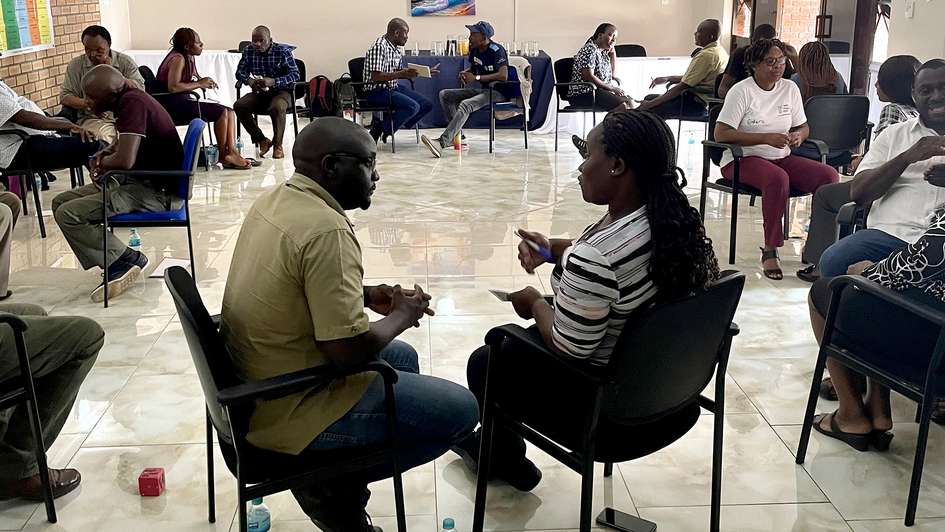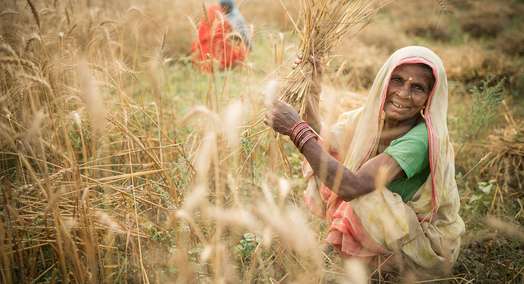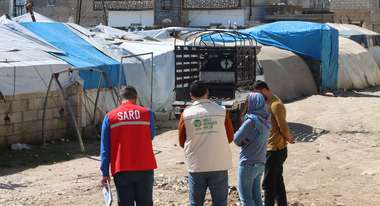Community-driven early action protocols in Zimbabwe
Involving communities in the planning of humanitarian assistance with the People First Impact Method (P-FIM)

Placing local people’s perspectives and ideas at the centre of anticipatory action ensures they have ownership of this approach and that the systems built are effective and relevant to local realities. To put this theory into practice, the Mvuramanzi Trust and the Farm Community Trust of Zimbabwe began piloting the People First Impact Method (known as P-FIM). Within the scope of Welthungerhilfe's Anticipatory Humanitarian Action Facility (WAHAFA), Welthungerhilfe Zimbabwe and these partners used P-FIM to develop people-centred, locally led early action protocols (EAPs) by identifying local challenges and exploring people-centred solutions.
What is P-FIM? People First Impact Method
P-FIM stands for People First Impact Method. P-FIM involves communities in the planning of humanitarian assistance.
- It does this by training staff and partners in how to communicate with representative communities, which helps to build mutual trust and open relationships.
- This in turn forms the basis for gathering accurate information, gaining a better understanding of contexts, increasing community participation and allowing for their active engagement.
- By listening to communities about the impacts of the issues they identify, and attributing these impacts, organizations can ensure that their actions and intended outcomes are aligned with the community’s priorities.
- P-FIM aims to understand people-led solutions to these issues, and identify where and how organizations can add value.
The P-FIM method enables agencies to listen to communities without agency or programme bias, by asking one simple, open question: what are the most important things that have happened in your lives in recent years? This allows the community to lead the discussion about the most important issues in their lives, the impacts of these, and who or what caused them.

P-FIM introduces tools for self-reflection and self-awareness. Communities identify what they have and what they do not have to live their lives to the full. They realize what they can achieve by themselves and with additional agency support. Sustainability is achieved through community-led projects based on realizing and appreciating community value.
Tillscent Kudzai Mashavira Monitoring, evaluation and learning (MEAL) officer, Mvuramanzi TrustThrough two-way engagement, the main issues raised are then used to achieve a common understanding and agreed way forward. Community members explain what they are already doing to address these issues and what kind of additional, external support may be needed. Then, both the community and the organizations agree on potential actions, which are rooted in the community’s existing interventions and preferences.

The [P-FIM] opened a whole new world for me in terms of how to approach future programming and implementation, in particular the planning aspect and to ensure people’s aspirations are at the centre of whatever interventions we make.
Bloodwell Tichatama Rusike Programmes manager, Mvuramanzi TrustPiloting P-FIM for early action protocol (EAP) development
In October and November 2023, 18 people participated in a P-FIM exercise to listen to a community in Bindura, Zimbabwe, and identify and attribute impacts. These included participants from government, local NGOs including the Mvuramanzi Trust, the Farm Community Trust and Nutrition Action Zimbabwe, as well as international NGOs including Welthungerhilfe Zimbabwe and Action Against Hunger Zimbabwe.

People will not tell us anything meaningful unless they trust us… After a goal-free community engagement exercise, one of the participants openly confided to me… ‘This is the first time ever that officials have come to listen to what we say without telling us what they want.’
Barnabas Muhoma Programme manager, Farm Community Trust ZimbabweIn preparation, the inter-agency teams met with different community groups – women, female youth, men, male youth, people with disabilities, community leaders, community health clubs, and the business community – to get a well-rounded understanding of the community’s dynamics and perspectives. This also increased awareness of why community engagement is important and how it can be implemented successfully by applying the communication skills introduced by P-FIM training. "We are very happy that you came to listen to us, as boys in school," said one young boy during a goal-free discussion. "It is the first time for us to actually meet outsiders without instructions, telling us what to do. You say you came here to listen, listen to us! And listen only! This is not usual [for] us."

The group really appreciated the P-FIM method: the listening part of it, the way we talk to them. We told them, we did not come here to promise you anything, we want to hear how the situation really is – and we want to hear it from you. In the beginning… they were saying: 'We are coming from the garden, we are very hungry!'. In the end, one of them was even saying: 'Are we already done?’
Vincent Chiunya Head of WAHAFA project, Welthungerhilfe ZimbabweUsing the results of the P-FIM exercise to develop an EAP
The findings of the P-FIM exercise were extensive, providing insights that will be valuable outside of the anticipatory action programme. These will be further examined for their relevance, feasibility and actionability in terms of developing an EAP development, which will also be done through a two-way exchange with the community.
Initial findings from the P-FIM exercise
Hazard prioritization
- Of the hazards identified as priorities by the community, those that aligned with the WAHAFA project’s priorities were drought, floods and epidemics (e.g., cholera). Other organizations will work on the community priorities that aligned with their own.
Anticipatory actions
- Community-led initiatives, such as internal savings and lending schemes, can be an entry point for identifying and prioritizing potential anticipatory actions; in turn, the actions selected can add value by expanding existing community initiatives.
- There is a need to carry out a survey of weir dams and sub-surface dams; this should help to establish actions that retain water and increase local aquifers, and establish the environmental benefits of shallow wells and sub-surface dams (compared to deep boreholes).
- Actions related to agriculture and food security – such as crop diversity, pfumvudza, irrigation, mulching, contour ridging – are potential drought-mitigation measures to ensure acceptable crop yields.
- Caregivers for mental health patients prefer home business options, such as home-based chicken farming.
- Income-generating activities and subsidies during drought would help farmers retain income to invest in early drought recovery; for example, this could be through use cash transfers.
- Communities emphasized the importance of support from local government, for activities such as hygiene promotion.







